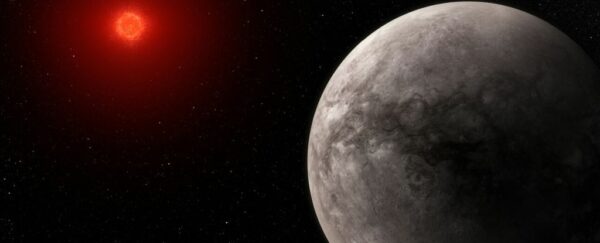An exoplanet of Earth’s size in the perhaps most promising alien system for indications of life is probably not habitable for life as we know it.
New observations from the James Webb Space Telescope indicate that the innermost world of the TRAPPIST-1 system, an exoplanet named TRAPPIST-1b with 1.4 times the mass and 1.1 times the radius of Earth, reaches a scorching 230 degrees Celsius (446 degrees Fahrenheit) and is unlikely to have an atmosphere surrounding its rocky body.
This is not a surprise; TRAPPIST-1b is so close to its host star that it revolves in 1.5 days and receives four times the stellar irradiation that Earth does; however, this is the first time that we’ve been able to make these measurements for a world so small and cool – the planet that is closest to Earth to date.
The information will also assist scientists understand more about the other six exoplanets known to circle the red dwarf star TRAPPIST-1, whose potential habitability is unclear.
“Terrestrial planets surrounding smaller, cooler stars are easier to define,” argues astronomer Elsa Ducrot of the French Alternative Energies and Atomic Energy Agency (CEA).
“The TRAPPIST-1 system is an excellent laboratory for studying habitability around M-type stars. They are the most suitable targets for studying the atmospheres of stony planets.”
In 2017, it was announced that seven rocky exoplanets were discovered circling a red M-dwarf star 40 light-years distant. Three of these exoplanets are located inside the star’s so-called habitable zone, which is not so near that all liquid water would evaporate nor so far that it would freeze.
It is an extremely enticing target for the hunt for life outside the Solar System, yet TRAPPIST-1’s significant differences from the Solar System raise doubts about whether or not life might develop there.
The planets in its orbit are far closer to the star than the planets in our solar system, with the most distant one round it every 18.8 days. As red dwarf stars are significantly smaller, dimmer, and colder than the Sun, the habitable zone is situated far closer to the star… Yet, red dwarf stars are significantly more aggressive than the Sun, unleashing strong flares into the surrounding space.
“There are 10 times as many of these stars in the Milky Way as there are Sun-like stars, and they are twice as likely to host rocky planets,” says NASA’s Ames Research Center astronomer Tom Greene.
“Yet, they are also quite active; when young, they emit flares and X-rays that are capable of destroying an atmosphere.”
TRAPPIST-1b is the initial step in determining how this activity may have impacted the system. Earlier investigations using equipment such as Hubble and Spitzer had ruled out a thin, cloudy atmosphere surrounding the exoplanet, but it was still possible that TRAPPIST-1b possessed a thick, dense atmosphere.
Here is where the infrared capabilities of JWST came into play. The researchers utilized the unique capabilities of the space telescope to attempt to detect the temperature of TRAPPIST-1b — the infrared light released by the exoplanet’s thermal radiation.
The answer was in the light curve generated by the exoplanet’s orbit around the star. As an exoplanet circling a star passes between us and the star, it blocks part of the star’s light, causing the star to fade somewhat.
Dimming can also be noticed when the exoplanet passes behind the star, a phenomenon known as a secondary eclipse.
This is because, when the exoplanet is on either side of the star, it reflects part of the star’s light in addition to emitting its own radiation, increasing the total amount of light that can be observed from the system. So, any light perceived during the secondary eclipse emanates only from the star.

Scientists may calculate the temperature of an exoplanet by calculating the amount of infrared radiation emitted by the exoplanet itself, as well as the predicted amount of sunlight reflected by the exoplanet. Thus, this might indicate the existence or lack of an atmosphere.
CEA astronomer Pierre-Olivier Lagage explains, “This planet is tidally locked, with one side facing the star at all times and the other in everlasting darkness.” The dayside will be colder if the planet has an atmosphere to circulate and disperse the heat.
Five secondary eclipses were observed for TRAPPIST-1b, from which a daytime temperature of around 230 degrees Celsius was calculated. Although this temperature is colder than the dayside of Mercury in the Solar System, it is inconsistent with the existence of an atmosphere.

Ducrot explains, “We compared the data to computer models predicting the temperature under various circumstances.”
“The results are nearly identical to a blackbody composed of bare rock with no atmosphere to circulate heat. We also did not observe any indications of light absorption by carbon dioxide, which would have been visible in these data.”
Future study, according to the scientists, might further define the global heat distribution of TRAPPIST-1b in order to gain a better understanding of rocky planets circling red dwarf stars and how these systems vary from our own.

